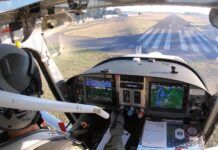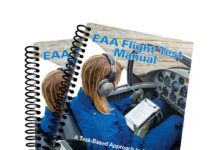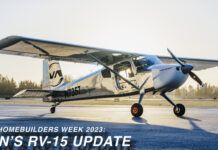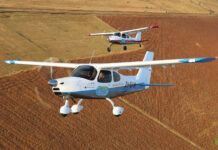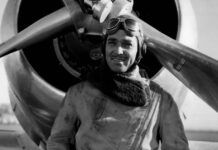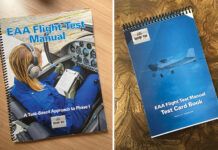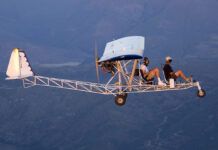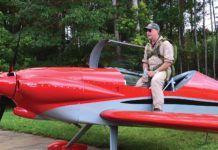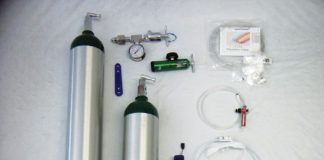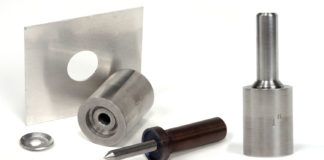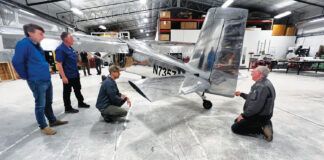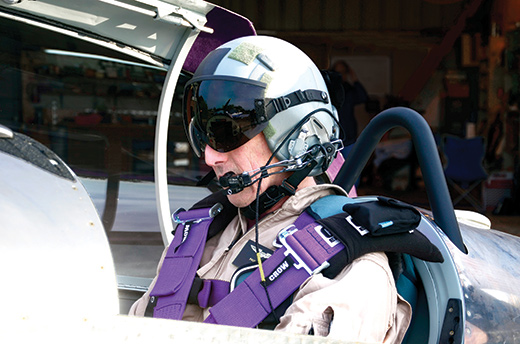 In previous installments of this short series, we have discussed the importance of planning your first flight thoroughly, and then preparing yourself for the flight-test environment with specific training. Let’s assume then that you have a good plan and have also “warmed up” your flying skills to be ready for the unexpected. We plan and train, of course, so that the unexpected will be a non-event when it happens. A day of flight testing is supposed to end with everyone safe in their beds and the airplane reusable for another day. That should be our ultimate goal, and if we have prepared properly, the actual flight can almost be a letdown when everything goes well. That’s OK. Nothing will take away from the feeling you get from flying a new airplane that you built with your own two hands and the knowledge that you and your team were prepared enough to keep the gremlins at bay.
In previous installments of this short series, we have discussed the importance of planning your first flight thoroughly, and then preparing yourself for the flight-test environment with specific training. Let’s assume then that you have a good plan and have also “warmed up” your flying skills to be ready for the unexpected. We plan and train, of course, so that the unexpected will be a non-event when it happens. A day of flight testing is supposed to end with everyone safe in their beds and the airplane reusable for another day. That should be our ultimate goal, and if we have prepared properly, the actual flight can almost be a letdown when everything goes well. That’s OK. Nothing will take away from the feeling you get from flying a new airplane that you built with your own two hands and the knowledge that you and your team were prepared enough to keep the gremlins at bay.
Once again, it is important to remind everyone of the valuable document that the FAA has prepared for us: AC 90-89a. It’s good to review the guide to flight testing Experimental/Amateur-Built several times as you plan, train and get ready for that first flight. If nothing else, it will put you in a methodical frame of mind and keep you sharp. Flight testing is a thinking person’s game, and your brain should be fully engaged on the day of that first flight.
Pre-launch Preparations
First flights are most commonly done early in the morning. This is preferable because of the calm winds and smooth atmosphere, but it is also great to start out fresh from a good night’s sleep. I try to make sure that I don’t have anything else worrying or bothering me when I am going to do a first flight. According to the plan, I will have arranged for the necessary team members, and they will know when to show up for the pre-flight briefing. No one participates in the flight if they aren’t at the briefing. If you have a chase plane and pilot coming from somewhere else, make sure they are there early and ready to go. If they can’t physically be at the briefing, dial them in on a speaker phone. Casual meetings above the test field are an invitation to disaster and have gone wrong in expensive (multi-billion-dollar) government test programs, so why would you think they would work out fine for you?
I like to have one person on the team responsible for nothing but trivia, so that the test pilot doesn’t have to worry about who’s bringing the donuts. This person can easily have other duties, but this particular job is to keep the test pilot focused by intercepting questions and well-wishers and keeping them out of the pilot’s hair. Hopefully, the test team will be a group of people who are familiar with Experimental aircraft, builders and pilots, and they should each be encouraged to do a preflight inspection. If they spot something they don’t think is right, they should bring it to the attention of the test pilot, with a suggestion for fixing it (which they are ready to put into action), if it can be fixed on the day of flight. Anything worse than a loose nut or a missing fairing screw should be considered a potential reason for scrubbing the flight. If the test pilot is the builder and he needs to break his flying focus to become a mechanic, then it might be time to recycle and start over on another day.
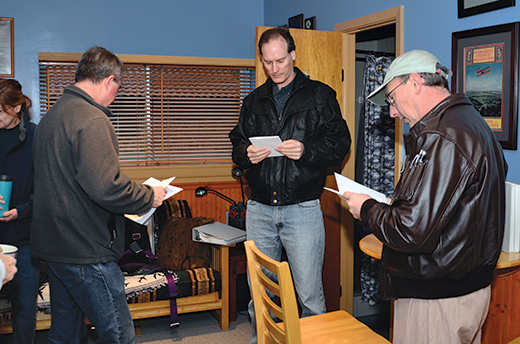
The preflight briefing should include all the team members involved, and it will be much more efficient if everyone has a copy of the plan and can take notes. Briefing ground rules should allow everyone to ask questions and contribute their thoughts on the safety of the operation.
Briefing
The preflight briefing should be thorough, attended by everyone involved and conducted with a written outline, copied for each person. Having extra pencils so everyone can add notes and reminders is a great idea. The briefing should be a “question-friendly” environment, and while it is not a time for great debate with the builder or test pilot, anyone should have the ability to call the whole thing off if a safety issue is seen. When I conclude a briefing, I ask each member of the team if they have questions, comments or safety concerns. And then I ask if everyone agrees that we are “Go” for the flight. Despite the fact that for many people, homebuilding is a hobby, this hobby can kill you if you make a mistake. It must be taken seriously.
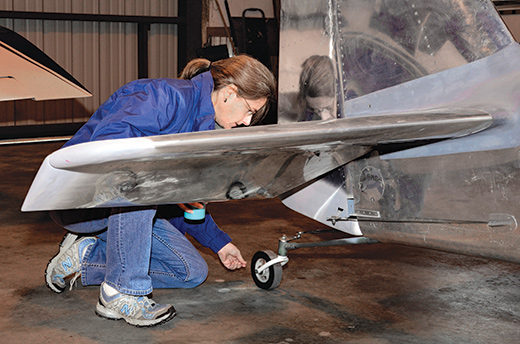
It pays to have several experienced builders and pilots perform their own preflight inspection to see if anyone can catch a last-minute problem. No aircraft is ever perfect—expect to find issues and have tools available!
Plan Execution
Briefing complete, the plan should be executed: nothing more, nothing less. First flights have a great deal of emotion wrapped up in them, from the builder’s pride to the fear of potentially serious problems. The team needs to be able to take the emotion out of the game by adhering to the plan. First flights should be short and to the point: a safe takeoff, a flight long enough to check that various systems are performing properly and that the handling qualities are safe for a landing, and then a landing on a nice wide runway to keep the challenge to a minimum. Following the flight, the cowls should come off once again to confirm that there are no leaks or pending hose or wiring issues. Why do I say “once again”? Well, one of the keys to an uneventful first flight is ground testing. The engine should be run enough times (but not allowed to get so warm that you prevent subsequent break-in of a new engine) and the cowl pulled afterwards, so that all of the little oil leaks and fluid drips are found and fixed before committing to flight.
Taxi testing is a whole different issue that deserves its own article, but enough “moving around” should be done to ensure that the brakes and steering work and the airplane is controllable at slow speeds. Check for leaks again. Put the cowl on and run it. Take the cowl off and make sure that nothing rubs or saws into anything critical. Did I say that you should check for leaks again? If you do enough of this, then the inspection after that first flight should produce a clean engine compartment, just as expected.
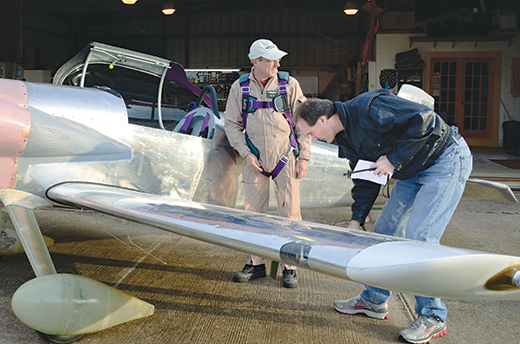
The ground crew chief should have his own checklist that includes helping the pilot make sure he or she hasn’t forgotten anything and is properly strapped in before the flight.
Ground Crew
I like to have one person designated as the ground crew chief to make sure that the chase plane launches on time (if used) and that the pilot of the test plane can concentrate on mentally preparing for any contingency that occurs early in flight. The crew chief helps keep folks away, while making sure that the pilot is properly strapped in, com cables are connected, checklists are in the airplane…all of the things that are easily forgotten. The fact is, as the test pilot focuses on the flight, he is going to lose a bit of awareness of the outside world. It is easy to forget a pair of sunglasses or a pen or the key to the airplane. He is about to take a new machine aloft, and though the odds of an incident are low, the consequences can be severe. One of the best test pilots I have ever met (a man who has walked on the moon) had a great response to reporters who asked him if he was nervous before a particularly important first flight. “Look, if you’re not nervous before taking a new machine aloft for the first time, you obviously don’t understand what you are about to do!” So expect some butterflies, and have a good chief to take care of the trivia.
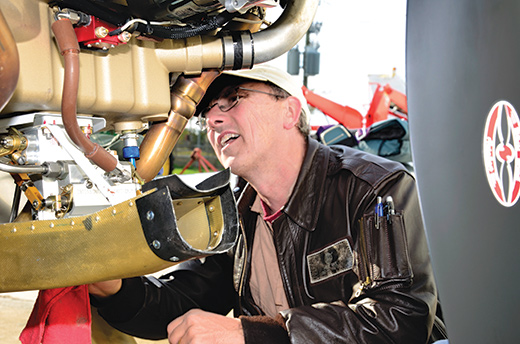
As always, the test pilot has the final authority to take the airplane up or not. He or she should personally sign off on any inspection squawk found by the team.
What the First Flight Is All About
There are so many safe ways to conduct first flights that it would be futile (and wrong) to write a detailed, specific outline here and give folks the idea that it is the only way it should be done. Instead, let me take a moment to discuss once again the purpose of the first flight. It is to make sure the airplane flies and is safe to continue the flight-test program, and to make a safe landing. That’s about it, in a nutshell. You don’t need to write down a lot of test data (you’ll do that on subsequent flights, and many complex homebuilts with even a minimal EFIS record the data these days anyway), and you don’t need to do anything fancy. You can make the second flight fancier if you want, but keep the first flight simple. Many first flights these days are done with new or newly overhauled engines, and the manufacturers have specific break-in recommendations that preclude much low-speed operation. Get up, make sure it is safe, and get down safely. I don’t recommend a specific length for this flight, but it needs to be long enough for the pilot to get comfortable with the airplane for the landing, and meaningful enough for the airframe that you give it a chance to shake itself out a bit. I like a takeoff, orbits of the field, a little calibration/validation of the airspeed indicator (if possible), an approach to the stall (not a full stall, just a feel for the buffet), a check of the approach speed on the ASI, and then a landing. I don’t rush to get on the ground, but I fly a strict test plan, and only those items on the plan.
As to the flying? If you have taken the time to get good transition training and done your practice, the actual flying of your new airplane should hold few surprises. Fly precisely and be at the top of your game, especially during the critical minute of that first takeoff, when you are most vulnerable to a systems problem that could result in being off the end of the runway. Pay attention to your altitude, especially if this is a high-performance airplane with lots of excess climb capability. Most pilots I know tend to hold a little more backpressure in the turns than needed, and before you know it, you can be a lot higher than you intended. This isn’t a bad thing, unless you have the floor of positive controlled airspace above you. You’ll have to split your attention between the outside and the instruments more than usual. Pay close attention to engine gauges in the initial part of the flight, but don’t panic if you suddenly see something drop from a good value to zero. For instance, if 20 gallons of fuel vanishes instantly, it is far more likely that the gauge has failed than that you had a tank rupture. If your rpm look very low or very high, consider how the engine sounds. Oil pressure is one thing that you absolutely must have in an internal-combustion engine to keep it running, so pay attention to what that gauge is telling you. I prefer to have both a gauge and a warning light triggered by an oil switch for redundancy. Of course, if one says you’re good and the other says you’re not, which will you believe? With an anomaly like that, it is time to put the airplane on the ground as safely and expeditiously as possible.
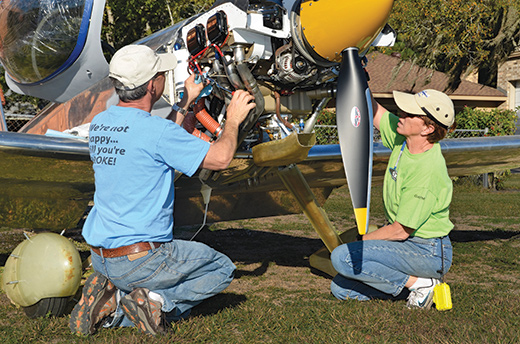
Power failures are the most common mechanical issues experienced on first flights. Take extra time to go over the firewall-forward installation one more time before buttoning things up for flight.
Keep It Simple the First Time
Ignore all the fancy stuff: the EFIS, GPS, radios, DVD player. They are not important on this first flight, so only use what you need and forget the rest until later. Autopilots have no business logging time on flight number one, unless they are integral to the control system, and you can’t fly without them (unlikely, unless you are building for Boeing). On that first landing, give yourself plenty of room and time, pick a runway that is long and wide, one you have been into many times before, and make yourself comfortable. If you don’t like what you see or feel, go around and try again. Good planning will dictate that you have plenty of fuel. Throughout the flight, think about how the airplane feels and store that in your mind for later debrief and recollection. And though you’ve spent years building this thing, don’t forget to take at a least a couple of moments to enjoy the thrill of flight. Then put your game face back on and stay professional.

The Cooper/Harper chart is a great way to perform a qualitative evaluation of a new aircraft during the postflight debriefing. The rating logic will quickly lead you to an understanding of the seriousness of any deficiencies found by the pilot.
Keep Your Emotions in Check
Exuberance is normal when you fly your new airplane for the first time, but it should not overcome good sense and planning. Victory rolls, for instance, are frowned upon on a first flight by most professional test pilots. Plan the flight to a set of requirements, then fly the plan. It is often joked that the test pilot loses about half of his or her IQ when sitting in an airplane for a first flight. I’ve been there many times, and there is a bit of truth to this. You simply are so preoccupied with flying the new airplane that trying to evaluate the safety of something that hasn’t been well thought out in advance is going to be hard, if not impossible. Trying to make stuff up is probably a bad idea under these conditions and is not going to end well.
Test flying in the “big leagues,” done by large corporations or the military, is done in a very structured and rigidly controlled environment. In many cases, the test organization owns not only the airfield, but all the airspace within shouting distance. They don’t have to worry about traffic or intruders (on the ground or in the air). We are not as fortunate, unless flying from our own private strip out in the country. One of the potential reasons for having a chase plane is to have someone else available to look for (and manage) traffic for the test pilot. While we obviously encourage vigilance on the part of test pilots at all times, it certainly lowers their already full workload if they don’t have to worry about where the “other guys” are going to be. At the same time, we want to be good citizens, even when we are test flying. We can’t demand that others get out of our way; we don’t have the right to do that. We can ask that they make way for a first-flight landing, and I can’t imagine the pilot who wouldn’t break off an approach for a request like this. But we can also do things like circle the field at a reasonable elevation above pattern altitude, and make frequent radio calls that we are up there, to stay out of everyone else’s way. Play nice, and others will play nice with you.
Radio Communications
Announcing on the radio that you are making a first flight is a great idea, as 99% of the folks out there are going to give you wide leeway. There will be a few folks who didn’t hear your calls, however, and some without radios, so remain cautious and realize that your “test status” does not give you any legal rights you wouldn’t otherwise have in the traffic pattern. Be as predictable as you can, and avoid surprises. Once you have landed, however, don’t be surprised if your ground team has doubled or tripled in size. Making those “first flight” announcements on the radio is bound to bring a few local folks by to be a part of the celebration. If this is the end of the flying day for you, then celebrate! Enjoy the experience, and let folks hear about the event…but not until you and your ground team have made sure that the checklist is complete and the aircraft is safe. If you have to do anything special to save your flight data on an electronic system, make sure to do so. Make yourself a few notes on the kneeboard: how it flew and anything that you saw that you want to talk about that might have affected safety. One trick I use to prevent a crowd from disrupting me in the critical postflight phase, when I am trying to shut down and make notes, is to keep the canopy (or doors) closed until I am ready to greet the world. Leaving your headset on is another good way of silently telling people that you are not quite ready to talk to them. Even when you have finished everything else up, you might want a few extra moments to yourself just to savor what you have accomplished, so stay buttoned up in your little flying “cocoon” as long as you want. Then, when you are ready, open up and greet the world.
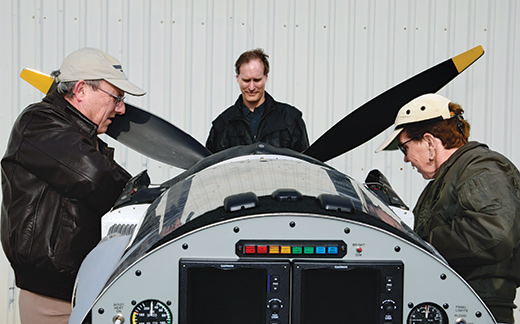
A postflight firewall-forward inspection is essential to make sure that fluid fittings and lines are still tight and nothing is found to be wearing or chafing on anything else. Take the time to do it right before committing to a second flight.
Leave Time for a Debrief
When the din has died down and the spectators have drifted away, assemble your team for a debrief. The flight isn’t over until you have talked about it! The most important question I ask every member of the team is: Did anyone see anything unsafe? If they did, we talk about it—how it happened, what we could have done to make it better. The next thing I ask is if anyone saw anything that needs to be fixed before the next flight. More discussion and ideas. When you are done, make some notes about what was learned, about the airplane’s performance, about your general impressions. Don’t forget to save the data files and store them someplace safe. You are going to be flying this airplane a lot, and if you are using data recording, the files will build up quickly. It is easy to forget what was what, and on which flight, so keep good records and be methodical. I have often had to go back several flights to find specific events and data points, and it can be tricky if the file names aren’t obvious.

With the first flight done, the team can move on to detailed flight testing—obtaining the data necessary for performance charts and numbers that other pilots can depend on later.
If you have fully prepared and trained for the first flight, the actual flying might seem a bit anticlimactic. Flight testing, while seemingly very exciting, should be as boring as possible in execution. I don’t like surprises, because they mean that we missed something in the planning process. And if you have trained fully, then the flying itself should not come close to pushing your limits as a pilot. First flights are rewarding, and they are something to be celebrated, but they are best celebrated when they prove that the airplane, pilot and team all can do what was expected, and everyone came home safe at the end of the day. When all is said and done, that is what a good first flight is all about.
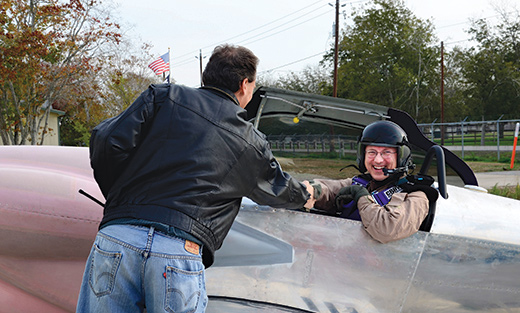
A first flight, done well, deserves a hearty handshake and congratulations.


